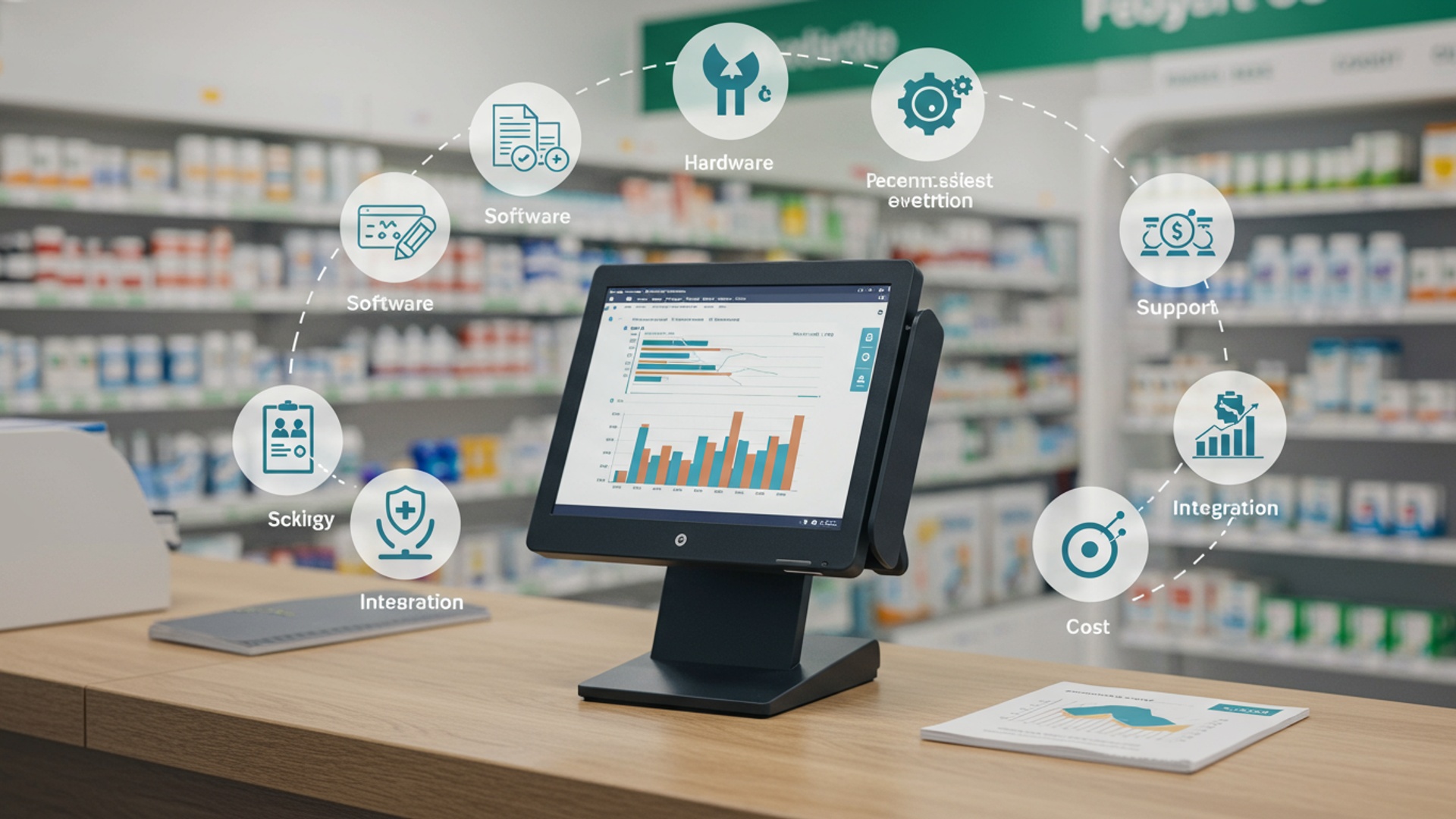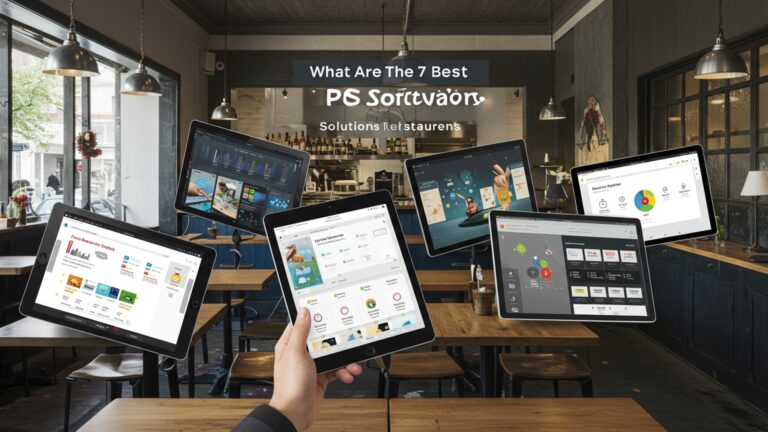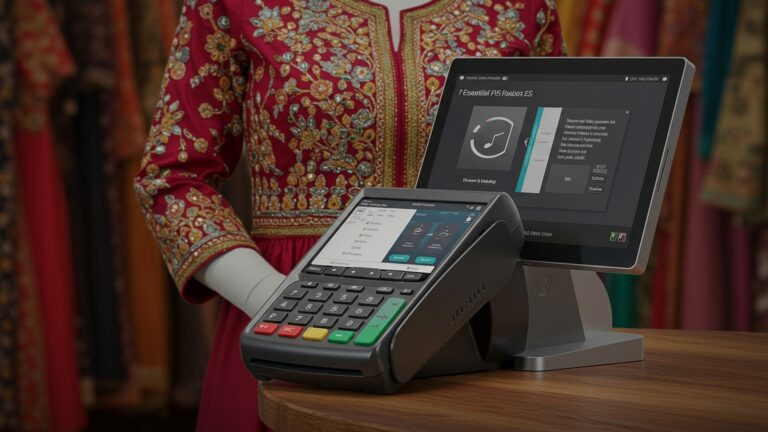7 Key Factors Impacting Pharmacy POS System Price You Must Know
Implementing a robust pharmacy POS system demands significant investment, yet understanding the true pharmacy POS system price involves far more than simply comparing initial vendor quotes. The cost landscape is highly dynamic, influenced by critical factors such as scalability for future growth, the depth of required integrations with PBMs, EHRs, or automated dispensing systems. the complexity of compliance features for regulations like HIPAA or 340B programs. Moreover, the architectural choice between on-premise solutions requiring significant hardware and maintenance versus a subscription-based cloud infrastructure, which offers greater flexibility and often enhanced security, profoundly impacts both upfront and long-term expenditures. Discerning these underlying cost drivers is crucial for any pharmacy seeking a system that aligns with both operational needs and budgetary realities in today’s evolving healthcare landscape.
Understanding the Core Architectures: Cloud-Based vs. On-Premise Systems
One of the most significant determinants of your overall pharmacy POS system price is the underlying architecture: whether it’s cloud-based or on-premise. This fundamental choice impacts not just the initial outlay but also long-term operational costs, flexibility. data security.
-
- Cloud-Based POS (Software-as-a-Service – SaaS)
In a cloud-based model, the POS software and your pharmacy’s data are hosted on external servers managed by the vendor. Access is typically via a web browser or a dedicated app over the internet. This model operates on a subscription basis, meaning you pay a recurring fee (monthly or annually).
-
- Definition
Software-as-a-Service (SaaS) is a software distribution model in which a third-party provider hosts applications and makes them available to customers over the Internet.
-
- Impact on Pharmacy POS System Price
- Lower Upfront Costs
- Impact on Pharmacy POS System Price
No need to purchase expensive server hardware or software licenses outright. The initial investment is significantly lower, making it accessible for smaller pharmacies or those with limited capital.
-
-
- Predictable Operating Expenses
-
Subscription fees are generally predictable, aiding budget management.
-
-
- Scalability
-
Easily scale up or down users, features, or locations without major hardware investments.
-
-
- Automatic Updates & Maintenance
-
The vendor handles all software updates, security patches. server maintenance, reducing your IT burden.
-
-
- Internet Dependency
-
Requires a stable internet connection for continuous operation.
-
- Real-World Application
A growing independent pharmacy, “MediCare Pharmacy,” chose a cloud-based system. Their owner, Ms. Chen, noted, “The low upfront cost was crucial for us. We pay a manageable monthly fee. all updates are handled automatically. When we opened our second branch, adding a new terminal was a simple subscription upgrade, not a complete system overhaul. This predictability greatly influenced our decision regarding the pharmacy POS system price.”
-
- On-Premise POS
With an on-premise system, the POS software is installed directly on your pharmacy’s own servers and computers. You own the software license outright. you are responsible for maintaining the hardware, software. ensuring data security.
-
- Definition
On-premise software refers to applications that are installed and run on computers located on the premises of the person or organization using the software, rather than on a remote server or cloud.
-
- Impact on Pharmacy POS System Price
- Higher Upfront Costs
- Impact on Pharmacy POS System Price
Requires substantial initial investment in server hardware, software licenses, network infrastructure. installation.
-
-
- Greater Control
-
Full control over your data and system customization.
-
-
- Data Security
-
Your data remains within your physical control, which some pharmacies prefer for compliance or proprietary reasons.
-
-
- Internal IT Burden
-
Requires in-house IT expertise or external consultants for maintenance, updates. troubleshooting.
-
-
- Potential for High Customization
-
Often allows for deeper levels of customization to meet unique workflows.
Comparison Table: Cloud-Based vs. On-Premise Pharmacy POS System Price Factors
| Feature | Cloud-Based POS | On-Premise POS |
|---|---|---|
| Initial Investment | Low (subscription fees) | High (hardware, licenses, installation) |
| Ongoing Costs | Predictable monthly/annual fees | Maintenance, IT staff, upgrades, electricity |
| Scalability | Easy, subscription-based | Requires hardware/license upgrades |
| Maintenance & Updates | Vendor managed | Internal IT team/contractor |
| Data Control | Vendor’s servers (with agreements) | Pharmacy’s own servers |
| Internet Dependency | High | Low (local operations can continue) |
Essential and Advanced Features and Their Cost Implications
The functionality your pharmacy POS system offers is a direct driver of its pharmacy POS system price. Basic systems handle core transactions, while advanced platforms integrate a multitude of features crucial for modern pharmacy operations. Understanding the difference is key to optimizing your investment.
-
- Core POS Functionality (Typically Included)
- Sales & Transaction Processing
- Core POS Functionality (Typically Included)
Basic ringing up of items, discounts, returns. various payment methods (cash, credit/debit).
-
-
- Inventory Management
-
Tracking stock levels, basic ordering. receiving.
-
-
- Customer Management
-
Basic customer profiles, purchase history.
-
-
- Reporting
-
Sales summaries, basic inventory reports.
-
- Pharmacy-Specific Advanced Features (Often Add-ons or Higher Tiers)
These features significantly enhance efficiency, compliance. patient care. naturally increase the pharmacy POS system price.
-
-
- Prescription Management & Dispensing Integration
-
Crucial for pharmacies, this involves seamless integration with Prescription Management Software (PMS) or Electronic Health Records (EHR) systems. It allows for prescription intake, verification, dispensing. adherence tracking.
// Conceptual API call for prescription lookup GET /api/prescriptions/{prescriptionId} Headers: Authorization: Bearer -
-
- Patient Profile & Adherence Management
-
Detailed patient histories, allergy alerts, medication synchronization. adherence reminders. This enhances patient safety and improves health outcomes.
-
-
- Insurance & Reimbursement Processing
-
Automated submission of claims to various insurance providers, adjudication. tracking of reimbursements. This complex process is streamlined by advanced POS systems, directly impacting revenue cycle management.
-
-
- Controlled Substance Tracking (DEA Compliance)
-
Robust systems for tracking controlled substances to ensure strict compliance with DEA regulations, including detailed logs and audit trails.
-
-
- Multi-Location Management
-
For pharmacies with multiple branches, this feature centralizes inventory, sales data. patient profiles across all locations, providing a unified view of the business.
-
-
- Advanced Reporting & Analytics
-
In-depth reports on sales trends, inventory turnover, prescription volume, pharmacist performance. profitability. These insights are invaluable for strategic decision-making.
-
-
- Loyalty Programs & Marketing Tools
-
Integrated tools to manage customer loyalty points, targeted promotions. email marketing campaigns to drive repeat business.
-
-
- Employee Management
-
Time clock functionality, shift scheduling. performance tracking.
-
- Actionable Takeaway
Before committing, conduct a thorough needs assessment. Differentiate between “must-have” features for compliance and efficiency. “nice-to-have” features that can be added later or might not be critical for your current operations. A pharmacy owner in a rural area might prioritize robust prescription management and insurance claims, while a city pharmacy with high foot traffic might value loyalty programs and advanced inventory forecasting.
Hardware Requirements: Terminals, Peripherals. Infrastructure
Beyond the software, the physical components that make a POS system functional are a significant part of the overall pharmacy POS system price. This includes everything from the main terminals to essential peripherals and the underlying network infrastructure.
-
- POS Terminals/Workstations
These are the core computers where transactions are processed. Options range from dedicated all-in-one POS units (touchscreen, integrated printer/scanner) to standard desktop PCs or even tablets (iPad POS).
-
-
- All-in-One POS
-
Higher initial cost but sleek design, less clutter. often more durable.
-
-
- Desktop PC + Peripherals
-
Potentially lower upfront cost if you already own PCs. requires more space and separate peripheral purchases.
-
-
- Tablet POS
-
Most cost-effective and flexible for smaller setups or mobile dispensing. may require specific stands or enclosures for security.
-
- Essential Peripherals
- Barcode Scanners
- Essential Peripherals
Used for quickly identifying products and prescriptions.
-
-
-
- Handheld Scanners
-
-
Common for general merchandise.
-
-
-
- Presentation Scanners
-
-
Ideal for high-volume transactions, allowing pharmacists to simply pass items over a fixed scanner.
-
-
-
- 2D Imagers
-
-
Essential for scanning QR codes on prescription labels or patient IDs.
-
-
- Receipt Printers
-
For printing patient receipts, prescription labels. end-of-day reports.
-
-
-
- Thermal Printers
-
-
Fast, quiet, no ink required. receipts can fade over time.
-
-
-
- Impact/Dot Matrix Printers
-
-
Good for multi-part forms (e. g. , controlled substance logs) but slower and noisier.
-
-
- Cash Drawers
-
Secure storage for cash transactions, typically integrated to open automatically upon cash sale.
-
-
- Payment Terminals (EMV/NFC Readers)
-
Devices for processing credit/debit card payments, supporting chip cards (EMV) and contactless payments (NFC like Apple Pay/Google Pay). These are often leased or purchased from a payment processor.
-
-
- Signature Pads
-
For electronic capture of customer signatures for credit card transactions or prescription pickups.
-
- Network Infrastructure
Reliable internet connectivity (especially for cloud-based systems) and a robust local area network (LAN) are critical. This includes routers, switches. potentially Wi-Fi access points. While not always directly included in the initial pharmacy POS system price quote, these are essential operational costs.
-
- Expert Insight
“Many pharmacies underestimate the impact of hardware on the total pharmacy POS system price,” advises a seasoned industry consultant. “Investing in durable, pharmacy-grade hardware upfront can prevent costly downtime and replacements later. Always consider redundancy for critical components.”
Integration Capabilities: Connecting Your Pharmacy Ecosystem
In today’s interconnected healthcare landscape, a pharmacy POS system rarely operates in a silo. Its ability to seamlessly integrate with other critical software and services significantly impacts its value and, consequently, its pharmacy POS system price. Integration streamlines workflows, reduces errors. enhances patient care.
-
- Prescription Management Software (PMS) / Electronic Health Records (EHR)
This is perhaps the most vital integration for a pharmacy. It ensures that prescription data flows directly from the prescribing physician or the pharmacy’s dispensing system to the POS for accurate processing, billing. patient record updates.
-
- Use Case
When a patient picks up a prescription, the POS system can pull the prescription details from the PMS, confirm quantities, verify insurance coverage. finalize the transaction, all while updating the patient’s medication profile in the PMS. This prevents manual data entry errors and speeds up patient checkout.
-
- Wholesale Distributor Integration
Connecting your POS inventory system directly with your primary drug wholesalers allows for automated ordering, real-time price updates. more accurate stock management. This reduces manual purchasing efforts and helps negotiate better pricing based on order volume.
// Conceptual data exchange for inventory reorder POST /api/distributor/order Headers: Content-Type: application/json Body: { "pharmacyId": "PHARMA123", "items": [ {"sku": "DRUGXYZ", "quantity": 5}, {"sku": "SUPPABC", "quantity": 10} ] } -
- Payment Processors
Integration with a chosen payment gateway (e. g. , Chase, Square, Worldpay) is standard. But, the flexibility to choose your own processor, or if the POS system locks you into a specific one, can impact transaction fees and overall costs.
-
- Accounting Software (e. g. , QuickBooks, Xero)
Seamlessly transferring sales data, payment insights. inventory costs to your accounting software simplifies bookkeeping, reduces reconciliation errors. provides a clearer financial picture of your pharmacy.
-
- Customer Relationship Management (CRM) Systems
For pharmacies looking to enhance patient engagement, integrating with a CRM can allow for personalized communication, targeted health campaigns. improved loyalty program management.
-
- Point of Care (POC) Testing Devices
Some advanced pharmacy POS systems can integrate with devices used for rapid testing (e. g. , flu, strep), allowing test results to be recorded and billed directly through the POS, expanding the pharmacy’s service offerings.
- Impact on Pharmacy POS System Price
Basic integrations (like payment processing) are often included. But, advanced, custom, or extensive integrations with multiple third-party systems typically incur additional fees. These can be one-time setup costs, recurring API access fees, or development costs if custom connectors are required. Evaluate the cost-benefit: robust integrations, while adding to the initial pharmacy POS system price, often deliver significant long-term savings through increased efficiency and reduced manual errors.
Number of Terminals and Users: Scaling Your Operations
The size and scale of your pharmacy operations directly influence the pharmacy POS system price, particularly regarding the number of terminals and user licenses required. Most POS vendors structure their pricing to reflect the resources and support needed for different operational scales.
-
- Terminal-Based Pricing
Many POS systems, especially traditional on-premise solutions or certain cloud offerings, charge based on the number of physical POS workstations (terminals) you have. Each terminal requires a license and potentially its own set of hardware peripherals.
-
- Scenario
A small independent pharmacy with one main checkout counter and one consultation area might only need two terminals. A larger, high-volume pharmacy might require four or more checkout terminals, plus additional workstations in the back office for inventory management and prescription processing.
-
- User-Based Licensing
Cloud-based systems often employ user-based licensing, where the fee is determined by the number of unique staff members who need access to the system. This can be concurrent users (number of people logged in simultaneously) or named users (total number of authorized accounts).
-
- Example
A pharmacy with 10 employees (pharmacists, technicians, clerks) might need 10 user licenses, even if only 4-5 are logged in at any given time. Some systems offer tiered pricing, where the per-user cost decreases as you add more users.
-
- Multi-Location Licensing
For pharmacies operating multiple branches, vendors often have specific multi-location pricing tiers. This might involve a base fee per location plus additional costs per terminal or user at each site. Centralized data management across locations is a premium feature that adds to this cost.
-
- Scalability and Future Growth
Consider your pharmacy’s growth trajectory. A system that is easy and cost-effective to scale up (add more terminals, users, or locations) will offer better long-term value. Some vendors offer flexible plans that allow you to adjust your subscription as your needs change, directly impacting your ongoing pharmacy POS system price.
-
- Actionable Takeaway
Carefully project your current and near-future needs. Don’t overpay for licenses you don’t need. also avoid a system that becomes prohibitively expensive to expand when your business grows. Inquire about the vendor’s policy for adding or removing users/terminals and any associated costs.
Ongoing Support, Maintenance. Updates
The initial pharmacy POS system price is just one part of the equation; the total cost of ownership (TCO) includes essential ongoing expenses for support, maintenance. software updates. These services ensure your system remains operational, secure. compliant.
-
- Technical Support
Access to technical support is critical for troubleshooting issues, answering questions. resolving downtime. Support plans vary significantly:
-
-
- Basic Support
-
Often included, limited to business hours, email/ticket-based. longer response times.
-
-
- Premium Support
-
24/7 availability, phone support, dedicated account managers, faster response times. proactive monitoring. This comes at a higher recurring cost.
-
-
- On-site Support
-
Rare for standard issues. critical for hardware failures or complex network problems, typically billed hourly or as part of a high-tier enterprise package.
-
- Real-World Scenario
During a busy flu season, “Harbor Pharmacy” experienced a system glitch preventing prescription scanning. Their premium support plan meant immediate phone assistance, resolving the issue within minutes and preventing patient backlog, justifying the higher support component of their pharmacy POS system price.
-
- Software Maintenance & Updates
POS software, especially for pharmacies, requires regular updates to introduce new features, improve performance. address security vulnerabilities. Crucially, updates are needed to maintain compliance with evolving healthcare regulations (e. g. , DEA, HIPAA, state pharmacy board rules).
-
-
- Cloud-Based Systems
-
Updates are typically automatic, included in the subscription fee. managed by the vendor. This is a significant advantage as it ensures you’re always on the latest, most compliant version without effort.
-
-
- On-Premise Systems
-
Updates often require manual installation by your IT staff or a third-party contractor. While the software license might be perpetual, access to updates and new versions often requires an annual “maintenance contract” or a fee for major version upgrades.
-
- Definition
Service Level Agreement (SLA) is a contract between a service provider and a customer that specifies the level of service expected from the provider. Key metrics often include uptime, response time. resolution time.
-
- Security Enhancements
With increasing cyber threats, ongoing security updates and patches are non-negotiable, especially when handling sensitive patient health data (PHI) and financial data. Robust systems integrate regular security audits and threat detection.
-
- Backup and Disaster Recovery
For cloud-based systems, data backups and disaster recovery are typically managed by the vendor. For on-premise systems, this is your responsibility, requiring investments in backup hardware, software. off-site storage solutions, adding to the hidden pharmacy POS system price.
-
- Actionable Takeaway
Do not compromise on support and maintenance. Downtime in a pharmacy can have severe consequences for patient care and revenue. interpret what’s included in the standard package and the costs for higher service tiers. A lower initial pharmacy POS system price might hide expensive long-term support costs.
Customization and Implementation Services
While out-of-the-box POS solutions are suitable for some, many pharmacies have unique workflows, specific compliance requirements, or desire tailored functionalities. The degree of customization and the complexity of implementation services significantly impact the initial pharmacy POS system price.
-
- Customization Levels
- Configuration
- Customization Levels
This involves setting up the system parameters to match your pharmacy’s specific needs without altering the core code. Examples include configuring product categories, pricing rules, tax rates, user roles. report templates. Most systems allow for extensive configuration. this is generally included or has minimal additional cost.
-
-
- Custom Development
-
If your pharmacy requires features not available in the standard software, custom development may be necessary. This could involve creating unique reports, integrating with highly specialized legacy systems, or developing bespoke modules. Custom development is typically billed hourly or as a project, adding substantially to the pharmacy POS system price.
-
-
- Example
-
“Cornerstone Pharmacy,” known for its compounding services, needed a custom module to track specific raw material batches and formula variations directly within their POS, integrating with their compounding software. This required several weeks of developer time from the vendor.
-
-
- API Integrations
-
Connecting to systems not natively supported might require custom API (Application Programming Interface) development. While many modern POS systems offer robust APIs, utilizing them for unique integrations often requires developer expertise.
-
- Implementation Services
The process of getting the POS system up and running in your pharmacy. This is a critical phase and often involves several stages:
-
-
- Project Management
-
A dedicated project manager from the vendor ensures a smooth rollout, coordinating tasks and timelines. This service might be included in higher-tier packages or billed separately.
-
-
- Data Migration
-
Transferring existing customer data, inventory lists, patient profiles. sales history from your old system to the new POS. This can be a complex and time-consuming process, especially with disparate data formats. often incurs significant costs.
-
-
- Actionable Takeaway
-
Request a clear data migration plan and quote. interpret what data can be migrated automatically versus what requires manual entry or cleanup. Inaccurate data migration can lead to operational headaches and compliance issues.
-
-
- On-Site Installation & Setup
-
Physical installation of hardware, network configuration. initial software setup. While some modern systems allow for self-installation, professional on-site setup ensures everything is correctly configured from day one.
-
-
- Training
-
Ensuring your staff is proficient with the new system is paramount. Training can range from self-paced online modules (often included) to live webinars, dedicated remote sessions, or costly on-site training sessions tailored to your team’s specific roles.
-
-
- Expert Insight
-
“Many pharmacies budget for software and hardware. forget to factor in comprehensive training,” warns a former pharmacy operations manager. “Under-trained staff leads to errors, slow service. frustration, negating the benefits of a new system. Good training is an investment, not an expense, impacting the true pharmacy POS system price.”
Conclusion
Understanding the factors influencing pharmacy POS system pricing isn’t merely about finding the cheapest option; it’s about discerning true value and long-term investment. As we’ve explored, the initial sticker price often belies the full picture, with crucial elements like advanced inventory management for controlled substances or seamless integration with e-prescribing platforms significantly impacting the overall cost and, more importantly, your operational efficiency. From my experience helping numerous pharmacies, I always advise looking beyond just the upfront fee to consider ongoing support, future scalability. compliance updates – particularly essential given the ever-evolving healthcare regulations. My personal tip? Don’t hesitate to negotiate or ask for a detailed breakdown of costs, much like understanding a prescription’s ingredients. Prioritize features that genuinely address your pharmacy’s unique needs, such as robust patient management or analytics for better stock rotation, rather than overpaying for unused functionalities. Choosing the right POS is a strategic decision that empowers your pharmacy to thrive in a competitive landscape, ensuring better patient care and streamlined operations. This isn’t just an expense; it’s an essential investment in your pharmacy’s future success.
More Articles
Learn 7 Key Features Your Pharmacy POS System Must Have
Discover 7 Essential Benefits of a Modern Pharmacy POS System Guide
7 Essential Tips for Finding Affordable POS Software Price in India
How to Select the Best POS Software in India A Comprehensive Guide
FAQs
Does choosing a cloud-based POS system really affect the price differently than an on-premise one?
Yes, definitely. Cloud systems usually have a lower upfront cost but come with recurring subscription fees. On-premise systems demand a larger initial investment for software licenses and hardware, plus you’re responsible for maintenance. you own the software outright.
What kind of features make a pharmacy POS system more expensive?
The more advanced or specialized features you need, the higher the price. Things like robust inventory management for controlled substances, complex reporting, integrated patient counseling modules, or advanced loyalty programs will add to the cost compared to a basic sales-only system.
Is hardware a big part of the overall cost for a new POS?
Absolutely. While the software is key, you’ll need hardware like barcode scanners, receipt printers, cash drawers. potentially touchscreen monitors or even servers. High-quality, durable hardware designed for busy pharmacy environments can significantly bump up the initial investment.
How does the size of my pharmacy or number of locations impact the POS system’s price?
Larger pharmacies or those with multiple locations will generally pay more. Most POS vendors price based on the number of terminals, users, or locations that need access to the system. More access points mean a higher licensing or subscription fee.
What about connecting the POS to other systems? Does that cost extra?
Often, yes. If you need your new POS system to seamlessly integrate with your existing pharmacy management system (PMS), payment processors, or even wholesaler ordering systems, there can be additional costs for integration modules or custom development work. Smooth integration is crucial but can add to the bill.
Will I have to pay extra for help getting started or if I run into problems with the system?
Typically, initial training and ongoing customer support are significant factors. Some vendors include basic support, while others offer tiered support packages with varying levels of access and response times. Comprehensive training for your staff and reliable, quick support often come with a premium.
What’s involved in moving my old patient or inventory data. does it cost money?
Migrating existing patient profiles, prescription history. inventory data from your old system to the new POS is a critical and often complex process. Many vendors charge for this service, especially if your data is extensive or in a difficult-to-transfer format. It’s a necessary step to ensure continuity. expect it to be a line item.






